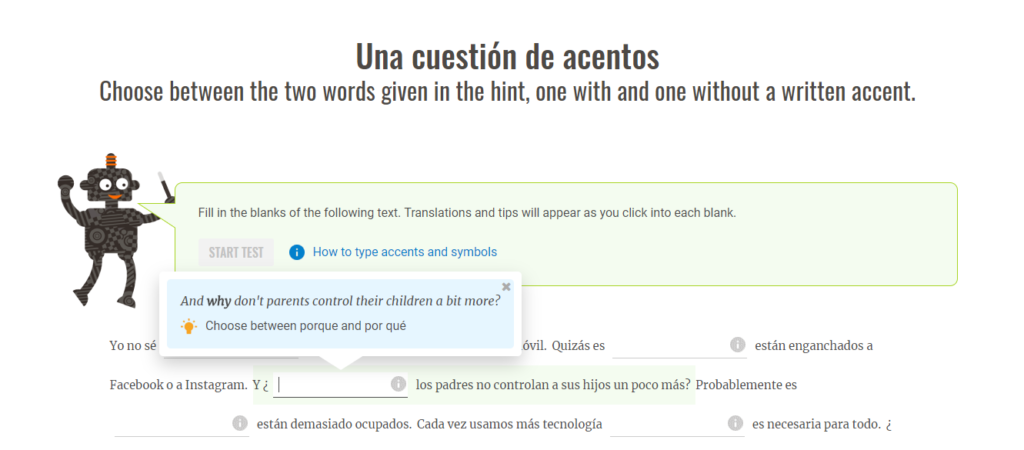When to use sólo vs solo ?
Spanish online reading, writing and listening practice – level B1
This fill-in-the-blanks test will help you with written accents in Spanish.
Here are some topics you might find helpful to review:
- The importance of accents in Spanish
- Difference between porque and por qué (because and why)
- Difference between Sí and Si (with or without accent)
- Difference between como and cómo (with and without an accent)
- Difference between que and qué (with and without an accent)
Make sure you know how to type accents before you start! There’s a tip box next to the Start Test button and as you go along you can get a reminder from the infotip (marked with an i) to the right of the text box .
Read the text, then decide which suggested word in the hint to use to complete each phrase – choosing each time if you need the word with or without the written accent. When you have finished, check your corrections, and then click play to listen to the whole text:
Una cuestión de acentos.
NOTE: You must be logged into your account to take this test.
How did you find this exercise? Leave a comment below – we love getting your feedback!
Comments: 2
¡Hola Ron!
That's an interesting question because the rules have changed, so depending on when you first learned Spanish you might not know that "solo" never has a written accent.
It used to be that "solo" without an accent indicated the adjective (English translation = "alone") and "sólo" with an accent indicated the adverb (synonym of "solamente", English translation = "only"), but since 2010 the Real Academia Española has stipulated that no written accent is required for either usage as the different meaning is clear through context.
So no written accent ever on "solo"!
Saludos
Shui
